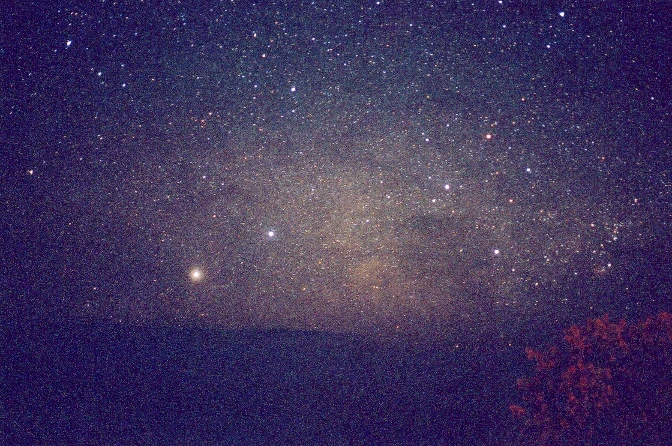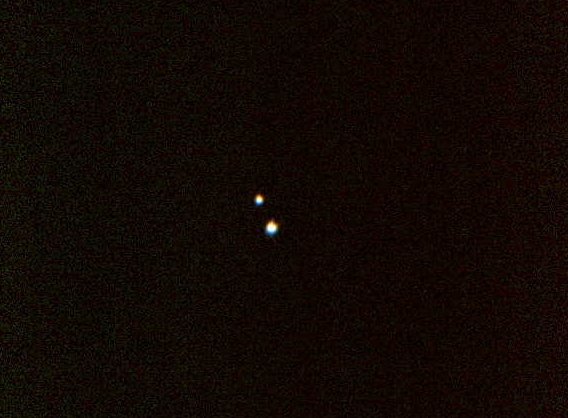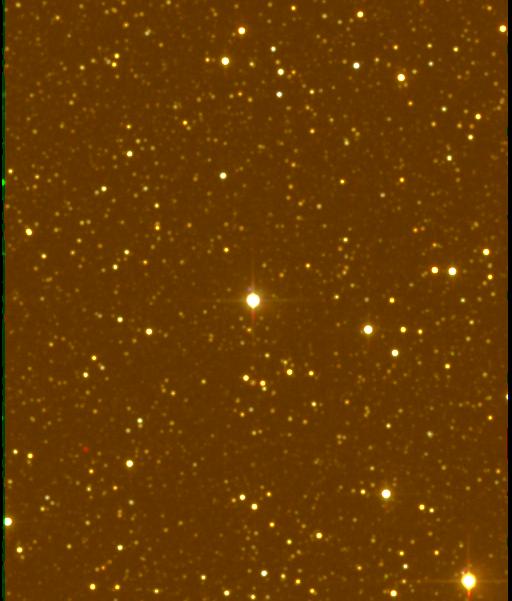

A favorite destination in science fiction for decades, the triple star system Alpha Centauri is the Sun's closest set of neighbors (unless, of course, there is some extremely faint red or brown dwarf that we haven't found yet). Alpha Cen itself is the brighthest double star in the sky, together appearing visually as the fourth brightest nighttime star, slightly brighter than magnitude zero. It appears above in a wide-angle view from Mauna Kea, as the brightest star at left; preceding it across the sky are the much more distant giant star Beta Centauri and the brilliant foursome of the Southern Cross.
Now we zoom in to the bright pair, consisting of main-sequence stars of spectral types G2 and K1 orbiting their center of mass with a period of 81 years (at a mean separation of 24 astronomical units, a bit farther apart than the Sun and Uranus). This closeup is from a 1983 slide taken through a 0.4-m telescope at Cerro Tololo Inter-American Observatory. Of particular interest in the search for extrasolar planets and life, simulations indicate that Earthlike orbits around each of these stars could be stable over billions of years. A good thing, since the spectrum and size of Alpha A indicate that it's already sl;ightly older than the Sun. Hipparcos put its distance at 1.347 parsecs or 4.395 lightyears, with only the pair's distant companion Proxima Centauri closer.

The third member of this system, showing up about 2 degrees away against the rich Milky Way background, is the red dwarf Proxima Centauri (also identified as V645 Centauri since it is a flare star), at a distance of 1.295 parsecs or 4.223 light-years. I show it below in a JHK (1.6-2.2 micrometer) color composite image from the near-infrared 2MASS sky survey (in which it is not nearly as red as in visible light). This image is 10 arcminutes across with north at the top. Oddly enough, it is not completely certain that Proxima is in a distant orbit around the Alpha-A,B binary; it may be moving too fast to be bound to them, which would make its nearness to them a remarkable coincidence.

Last changes: 11/2003 © 2003